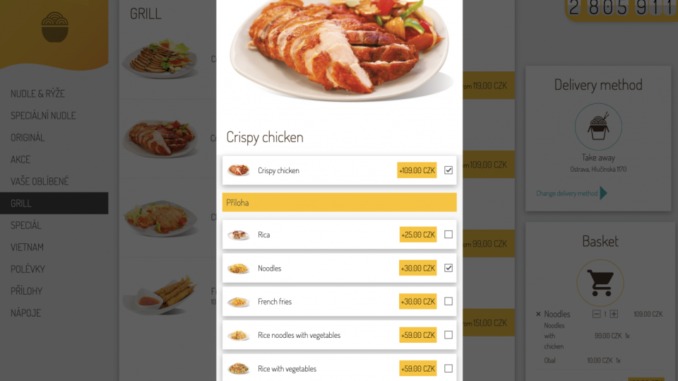
By Lukasz Kolczynski, head of technology development at Ordering Stack - 8.19.2021
An online ordering system is a must for every modern restaurant. Such a system is nothing like a pepper grinder, bought once and used as long as it is not broken. Rather, an online ordering tool evolves over time and restaurants using it should know how to guide it in the process.
Online ordering systems are here to stay. According to a recent Deloitte study, restaurants have witnessed a 14% increase in takeouts and food delivery orders since the beginning of the COVID-19 outbreak, with some businesses thinking about reducing their physical restaurant footprint.
Forced to stay at home and stripped of the possibility of dining out in a restaurant, customers forged new habits of ordering food online or taking it out. The importance of online ordering is only going to continue to grow.
An online ordering system (like Ordering Stack) is a sophisticated and complex piece of machinery that can significantly support and improve restaurant performance.
Online food selling requires the same approach as offline selling. The customer needs to be provided with good food visuals and images. Also, the design needs to fit into the aesthetics of the brand. An online ordering system can be enhanced with the right UX and UI design, either aimed to increase conversion rates or to make the menu and the tool more visually appealing. This improves the user experience and helps restaurants drive increased customer loyalty.
The best layout is also about building the best UX with the UX design optimization of the web service. According to Forrester research, investment in UX design is one of the best ways to boost company performance, with every $1 invested in UX design bringing upwards of $100 in return.
Engaging in continuous optimization is also important success factor. According to a study published in The Wall Street Journal, leading tech companies conduct A/B testing tens of thousands times yearly, with slight changes resulting in 12% revenue increase, on average. Endless optimization consists of A/B tests and data gathering to determine the best possible results and most effective ways of promotion. A crucial aspect of the strategy is to never say: “that’s enough”. A business needs to constantly challenge the current setting and search for new ideas – from a slight boost to the overall revolution.
This goes to the next point, which is: Don’t be afraid to experiment.
There will always be the temptation to think that the current state or configuration is “the perfect one,” perhaps requiring only slight adjustments. The only way to be sure that the current layout is indeed the most effective one is to run constant tests and not be afraid to run bold experiments.
The most important element of running experiments is to do so in a controlled environment, using technology that is designed to support experiments and supports both the analytics and the experimentation.
The system must be reliable and also secure, with minimal risk of cybercriminals attacking the site and taking it down. Also, with a cloud-based, the restaurant gains access to a nearly-infinite amount of memory or computing power, so there is no risk that the increase in the traffic will take down the website. There can be no greater pain than to cause frustration rather than delight when a super-discount is unavailable due to the website being down.
Last but not least (for sure not least): Listen to your customers. A business needs to be open and understanding toward its customers. The team needs to actively listen to the feedback from the customer base.
When it comes to an online ordering system, the listening needs to be done by analytics tools that should be fully integrated. These tools should enable the restaurant to identify signs of customer dissatisfaction and dig for root causes.
There may be a temptation to see an online channel as a “flood” of nameless numbers and points in a chart. This couldn’t be further from truth. Each and every user is an individual customer with their own set of motivations and reasons for behaving in a particular way. Listening to them and understanding their behavior is the best way to improve the online ordering system. In the end, it is their tool for the purpose of ordering a meal as much as it is the restaurant’s tool for generating increased revenue.
The irony of working to make an online ordering system better is the fact that the greatest limits come from the system itself. If the solution is not supporting multiple and various ways to boost engagement rates and improve workflows, the ability to improve it will be severely limited. On the other hand, a solution with analytics and testing features already built in has everything a restaurant requires in order to improve its performance on an ongoing basis.
 A graduate of the Warsaw University of Technology and the European Academy of Managerial Skills (MBA) at the Warsaw School of Economics, Lukasz Kolczynski is responsible for the development of new technologies and implementing advanced information systems at Ordering Stack and 3e Software House.
A graduate of the Warsaw University of Technology and the European Academy of Managerial Skills (MBA) at the Warsaw School of Economics, Lukasz Kolczynski is responsible for the development of new technologies and implementing advanced information systems at Ordering Stack and 3e Software House.
Are you an industry thought leader with a point of view on restaurant technology that you would like to share with our readers? If so, we invite you to review our editorial guidelines and submit your article for publishing consideration.

